Record low rivers prompt drought experts meeting
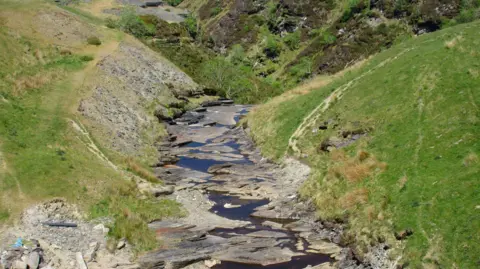 Tudur Davies
Tudur DaviesDrought experts will meet this week to decide if stronger advice on water use is needed in response to record low river levels, BBC Wales has been told.
On Thursday, Wales' drought liaison group will discuss whether all or parts of the country should be upgraded from normal to prolonged dry weather status.
Several rivers in north and mid Wales are classed as having notably low levels, while the Dee and Yscir are at their driest since records began in the 1970s.
The Welsh government said its expert group would meet regularly to "ensure water supplies are effectively managed and the environment protected".
Rainfall in Wales so far this spring has been well below average, with the country seeing 49% of the levels expected during March and April, according to the UK Centre for Ecology and Hydrology (CEH).
Though wetter weather is forecast this weekend and into next week, Catherine Sefton, senior hydrologist at the research institute, said sustained rainfall was needed.
"Unless we have appreciable rainfall now at the end of spring and going into the summer there will be concerns for water resources and the environment as well as impacts on agriculture with the dry soils," she said.
Mid and north Wales had a particularly dry April, with rivers such as the Conwy, Dee and Wye ranked as notably low, according to CEH's reports.
The Yscir in Powys was exceptionally low, recording just 21% of its average April flow.
Both it and the Dee hit their lowest levels on record for the time of year.
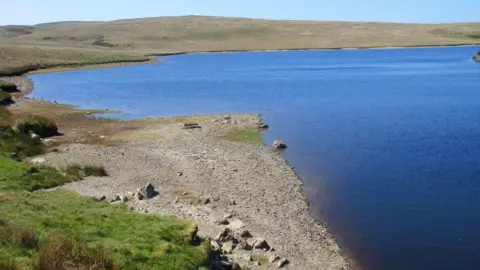 Tudur Davies
Tudur DaviesReservoir stocks have also been drawn down at a faster rate than an average spring.
As of 8 May, Welsh Water's reservoirs were 79% full in south-east Wales, 89% full in the south-west, 90% full in the north-east and 92% full in the north-west.
The company has already been urging customers to be mindful with their use of water.
Ian Christie, managing director of water, asset planning and capital delivery at the firm said it was "implementing measures to preserve upland reservoir supplies where we can" while trying to cut leaks from pipes.
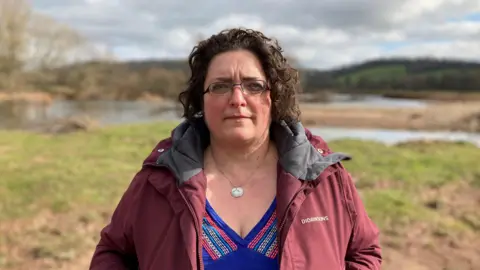
Lily Jones, from Llanrwst, Conwy, said she was not concerned about water levels.
"I don't think we need to be worrying about running out of water anytime soon, I think we should be enjoying the weather while it's here, we can still cope," she said.
"But I don't waste it," she said of her water use. "It's not good for the farmers, the flowers and the crops."
But Morwenna Theaker, 53, from Llanrwst said water is too often left to waste.
"Now when we don't have any water it's maybe not hurting us as much but it's definitely hurting the wildlife," she said.
"It will be inevitable that we will have to ration water if this carries on like this, but I still think we should be doing the things, like making more reservoirs and making places that hold more water," she added.
Natural Resources Wales (NRW) said there had been "no or very little rain across Wales" so far in May and "the majority of rivers are currently low".
Caroline Harries, who leads NRW's water resources team said spring was critical for "fish migration and land management" and her teams were "closely monitoring river levels and temperatures".
She also urged people to use water wisely to "protect our natural environment".
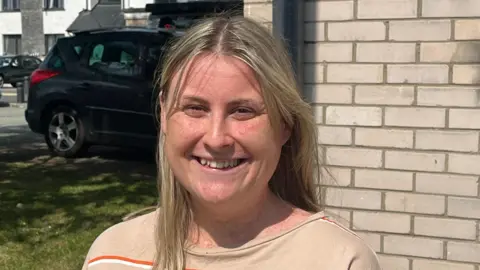
The drought liaison group is chaired by the Welsh government and brings together the country's water firms, NRW, the Met Office, farming, environment and public health leaders.
Thursday's meeting will review the latest data, with potential announcements to follow, BBC Wales has been told.
Experts could decide to declare a period of prolonged dry weather across all or part of Wales, marking a step further on the ladder towards an official drought.
NRW's website notes that, once prolonged dry weather is declared, the regulator "steps up its actions" that include enhanced monitoring and checks on water bodies, providing guidance for farmers and ensuring those who take water from rivers are abiding by the conditions on their licence.
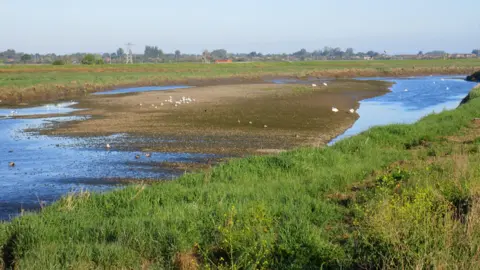 Tudur Davies
Tudur DaviesGail Davies-Walsh, chief executive of Afonydd Cymru - which represents Wales' rivers trusts - said a change in status would involve an "increase in communications" by all involved in drought planning.
"We're really asking people to think about the fact that the water they use in their home is either coming from a reservoir in Wales or it's coming from our rivers," she said.
Being mindful with water usage now "can reduce the number of actions we need to take further on" and would also help protect fish and wildlife "trying to survive in what is becoming increasingly hotter water and much lower levels".

Retired agriculture teacher Tudur Davies, 78, cycles daily around his local area near St Asaph in Denbighshire, taking photos, and said he had been struck by how early in the year signs of a drought were appearing.
"The hills look burnt," he said, adding that peatland, usually wet and boggy, "is now crunchy" underfoot.
"Even if we get quite a bit of rain next week it will take a long time for things to change," he added.
The Welsh government said it was "working with partners to monitor the levels of water bodies" and the drought liaison group would "continue to meet regularly to share situational updates, and to ensure water supplies are effectively managed and our environment is protected".
